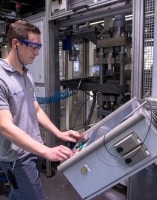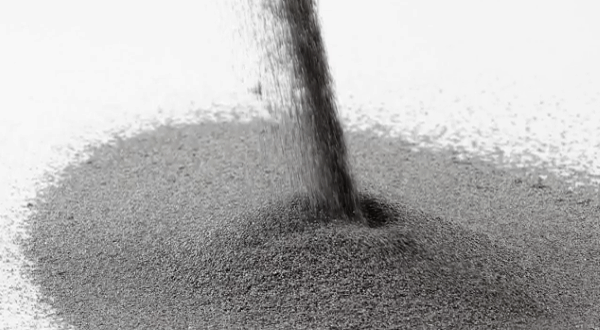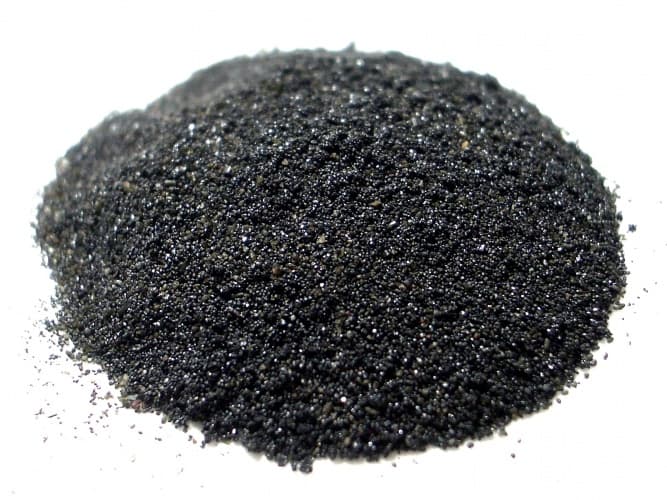Ask any engineer where the future of manufacturing lies, and high on their list of technologies will be 3D printing.
The technology, also known as additive manufacturing, allows components that are too complex to be built using conventional techniques to be produced at the touch of a button.
Additive manufacturing also makes it possible for engineers to design and build individual parts using different materials, each of which give the finished component a particular property.

In this way, engineers can precisely design the material of their part at the same time as they design its shape, according to Professor David Wimpenny, chief technologist at the Manufacturing Technology Centre (MTC) in Coventry, which recently opened the government and industry-backed National Centre for Net Shape and Additive Manufacturing.
“The strength and integrity of components and products made by additive manufacturing often exceeds that of conventionally produced parts,” he said. “Complex shapes and structures can be made with no joints or weaknesses.”
However, any part produced using additive manufacturing techniques will only be as good as the metal powder used to print it. Unless additive manufacturers precisely control the materials that they use, they can end up making parts containing significant defects, said Wimpenny.
This can prove extremely costly, since the materials used for additive manufacturing are often very expensive. Titanium powder, for example, can account for up to one third of the overall cost of the process.
“It seems obvious, but industry has been a little slow to focus on the materials,” he said. “Companies have spent a lot of time looking at the hardware and not at the materials coming in.”
All of the materials entering the MTC’s laboratories are thoroughly tested, and the researchers have found that not all batches of powder meet their specifications. “We find subtle differences between powders, including both new and recycled powders, which do not manifest themselves using more traditional test methods, and are critical for the performance of the machinery,” said Wimpenny.
Since not all manufacturing companies have the ability to test their incoming powders this thoroughly, these variations can lead to significant problems, he said. “The machines can fail to build parts, even though the powder passes conventional specification tests.”
As the field of additive manufacturing is still relatively new, many specification tests carried out are based on those used for more conventional powder metallurgy processes. However, these tests can prove unreliable when applied to additive manufacturing, he said.
“We’ve found there can be significant variability in the (results produced by) more traditional tests, whereas with automated testing using more advanced equipment we see less variability, and we can also obtain more information,” he said.
Researchers at the MTC test incoming powder in three ways, according to Dr Jason Dawes, technology leader for particulate engineering at the centre. Firstly, the researchers analyse the powder’s chemical properties.
“The chemistry is arguably the most important thing to test, because if the material is not within its chemical specifications it will affect the way the part forms, in terms of its mechanical properties and how it fatigues,” said Dawes.
In particular these tests look for the presence of chemicals such as nitrogen, hydrogen, carbon or oxygen, with the latter a particular concern in aerospace components.
They then analyse the flow properties of the material. If the powder does not flow freely, it will not form an even layer over the base of the build chamber. This in turn results in gaps in the powder coverage, said Wimpenny.
“It doesn’t matter how good you are at controlling a laser or an electron beam, if there isn’t the metal in that position there to melt, you will end up with defects in the part,” he said.
Typically, these defects can take the form of voids, or holes within the part. When more material is applied on top of these holes, fresh powder can fill the void and may not be melted by the laser or electron beam. This results in a defect within the part that can be difficult to spot using non-destructive testing techniques, as the loose powder masks the hole.
Existing techniques for analysing the flow properties of the powder tend to be quite simplistic, and do not provide detailed information, said Dawes. “We’re interested in how the material flows from a storage hopper, and how it then spreads across the build chamber, and how it packs in a thin layer,” he said. “This is information that you can’t get from simplistic techniques, you need to use much more advanced technologies.”
The researchers are using a technique called shear cell analysis, which effectively measures how easily a powder, initially at rest, can be made to flow. The force required to shear the sample tells the operator how free-flowing it is.
Finally, the researchers analyse the material’s particulate properties, by testing the particle size, shape, distribution and surface area.
Conventional measurement techniques have tended to define the size of particles using what is known as the equivalent sphere, said Dawes. They do this by taking the volume of a particle, and defining its size as that of the diameter of a sphere of the same volume, he said.
However, since the gas atomisation technique used to make powders for additive manufacturing often produces irregular shapes, this can be an imprecise way to measure particle size.
“The further you deviate away from a sphere shape, the more potential error there is in your measurements of its size,” said Dawes.
Instead, researchers at MTC are investigating a process known as image analysis, in which a machine captures images of the particles and measures their dimensions on an individual basis. This allows the researchers to quantify both the size and shape of particles, and understand how spherical the distribution of particles is throughout the powder.

These analysis techniques are important, not just for new powder entering the additive manufacturing process, but also for powder already in the build chamber that must be recycled, Dawes said.
A build chamber may contain 190 kilograms of unfused support powder for every 10kg worth of printed part, he said.
“One of the big selling points of the technology is that you can get much closer to the geometry (of your finished part), or what’s known as near-net shape,” he said. “But there is no point in that if you have 190kg of wasted material, so you have to be able to recycle the powder or the process can never be economically viable.” However, there are uncertainties as to the effect of recycling on the properties of the powder, and how this in turn impacts on the build process. Recycled powder should be treated in the same way as new powder and should be tested to the same specification standards.
”One of the big selling points of the technology is that you can get much closer to the geometry (of your finished part). But you have to be able to recycle the powder or the process can never be economically viable
Jason Dawes, MTC
So the researchers are using the same testing technologies to understand how the process effects the powder, Dawes said.
Meanwhile, GKN Aerospace is similarly leading an effort to explore the recycling and re-use of titanium powders, and to study the potential applications of the recycled material, as part of a three year research programme.
The £3.1 million programme, called TiPow (Titanium Powder for net-shape component manufacture), is aiming to develop titanium powders specifically formulated and blended to meet the needs of additive manufacturing of aircraft components.
The programme, backed by the Aerospace Technology Institute and Innovate UK, will also develop techniques and equipment to produce large quantities of the powder at a consistent quality, and for a lower cost.

The alloys and powders currently used in additive manufacturing have not been developed specifically for this purpose, and so are not optimised for the process, according to Dr Rob Sharman, global head of additive manufacturing at GKN Aerospace.
The TiPow programme will develop titanium powders and alloys with characteristics specifically suited to additive manufacturing, Sharman said.
“Additive manufacturing is in its infancy and there are many further improvements to be made, of which raw material is one,” he said. “By developing powders tailored to additive manufacturing we can improve the economics and possibilities of the technology.”




Red Bull makes hydrogen fuel cell play with AVL
Surely EVs are the best solution for motor sports and for weight / performance dispense with the battery altogether by introducing paired conductors...